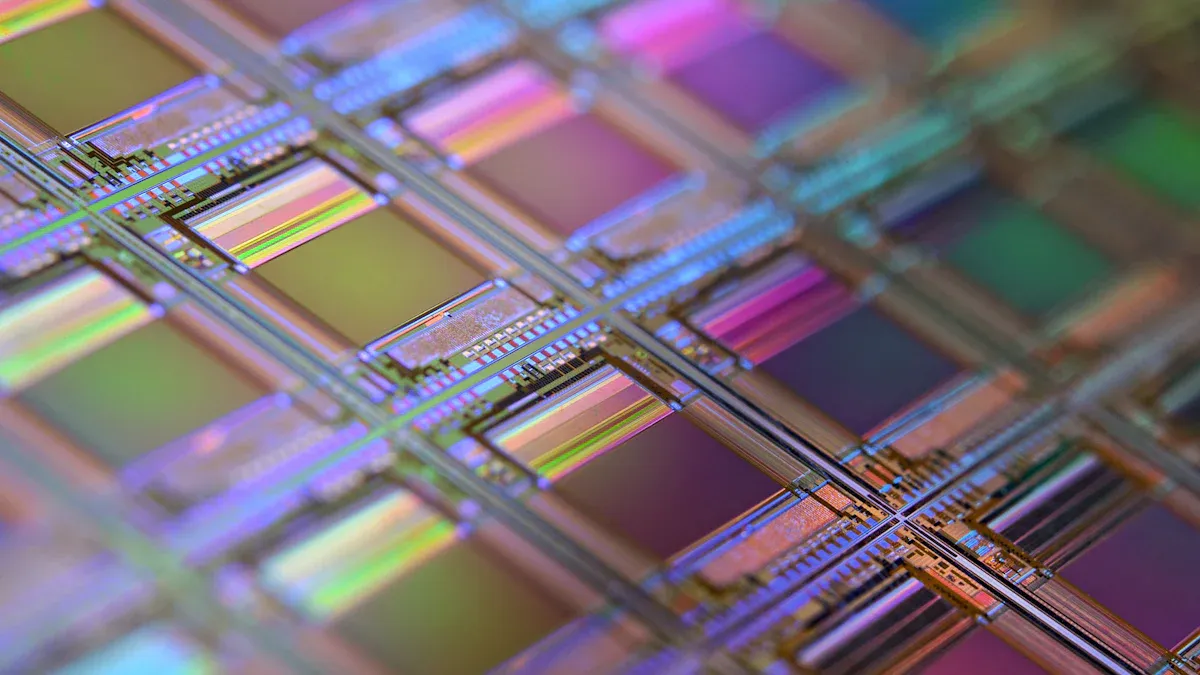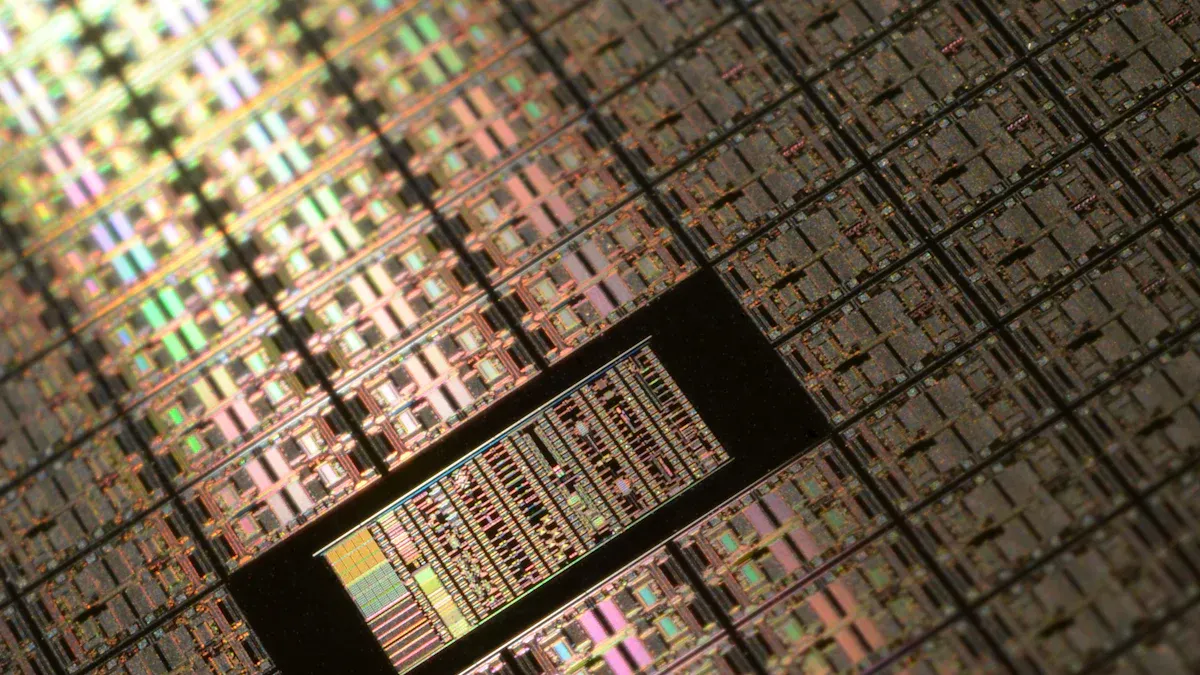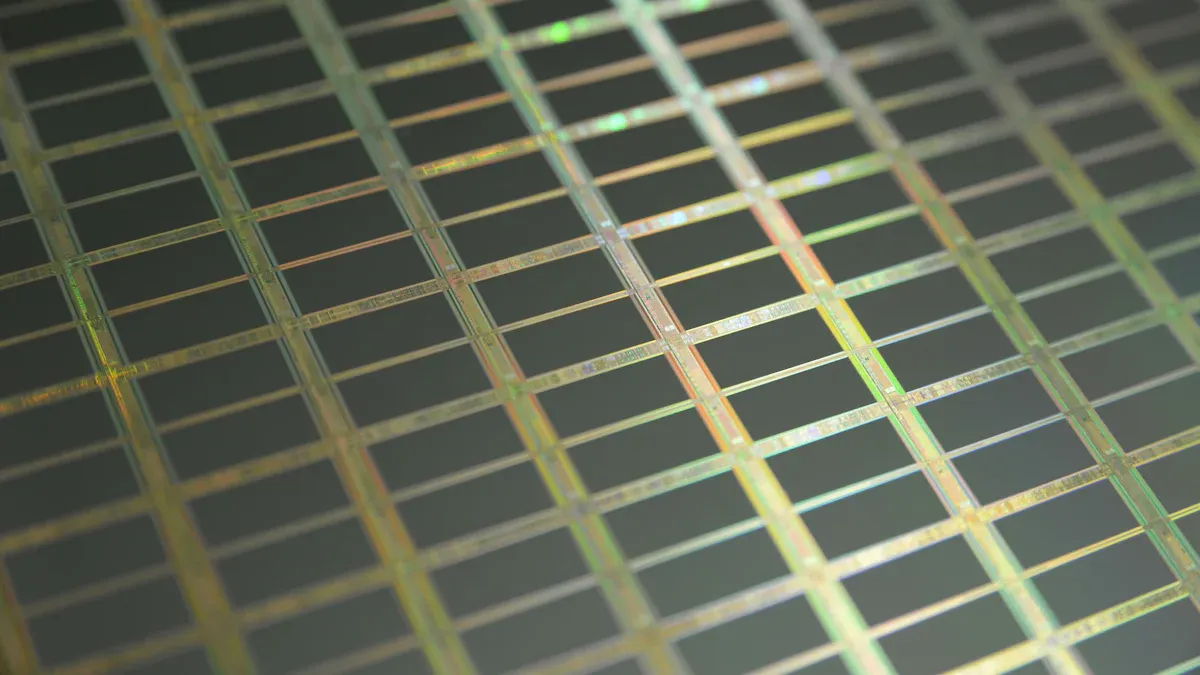
Industrial furnaces face extreme conditions that wear down their components over time. The process of SiC CVD on graphite offers a transformative solution by extending furnace lifespan by 60%. This technology deposits a durable layer of silicon carbide onto graphite, creating a surface that resists heat, corrosion, and mechanical stress. You benefit from fewer breakdowns, lower maintenance costs, and improved efficiency. The application of industrial SiC CVD on graphite has become a game-changer for industries that rely on high-performance furnaces. Its innovative impact ensures longer-lasting equipment and enhanced operational reliability, making CVD SiC coating for industrial applications a vital advancement in furnace technology.
Key Takeaways
- SiC CVD on graphite helps furnaces last 60% longer.
- The silicon carbide layer makes parts tough against heat and damage.
- Better heat spreading from SiC saves energy and cuts costs.
- Air Liquide uses CVD tech to make strong, reliable coatings.
- SiC CVD costs more at first but saves money over time.
The Process of SiC CVD on Graphite

What is SiC CVD?
SiC CVD stands for silicon carbide chemical vapor deposition. It is a process where silicon carbide, a highly durable material, is deposited onto a surface using chemical reactions. This method creates a thin, uniform coating that enhances the surface’s strength and resistance to extreme conditions. You might wonder why this process is so important. It allows you to improve the performance of materials like graphite, making them more suitable for demanding industrial applications.
The process involves heating gases containing silicon and carbon to high temperatures. These gases react and form a layer of silicon carbide on the target material. This coating is not just a surface layer; it bonds tightly to the material, creating a durable and long-lasting finish.
How is SiC applied to graphite substrates?
Applying SiC to graphite substrates requires precision. First, the graphite surface is cleaned to remove any impurities. This step ensures that the silicon carbide adheres properly. Next, the graphite is placed in a chamber where the chemical vapor deposition process occurs.
Inside the chamber, gases like silane (SiH₄) and methane (CH₄) are introduced. These gases break down at high temperatures, releasing silicon and carbon atoms. These atoms then combine to form silicon carbide, which deposits onto the graphite surface. The result is a smooth, uniform coating that enhances the graphite’s properties.
This process is highly controlled. You can adjust factors like temperature, gas flow, and pressure to achieve the desired coating thickness and quality. This flexibility makes SiC CVD on graphite a versatile solution for various industrial needs.
Key properties of SiC coatings
Silicon carbide coatings offer several remarkable properties. First, they are incredibly hard, which makes them resistant to wear and tear. This hardness ensures that your equipment lasts longer, even in harsh environments.
Second, SiC coatings can withstand extremely high temperatures. This property is crucial for industrial furnaces, where materials are exposed to intense heat. The coating also resists chemical corrosion, protecting the underlying graphite from damage caused by reactive substances.
Another key feature is thermal conductivity. SiC coatings help distribute heat evenly, improving the efficiency of your equipment. They also have a low thermal expansion rate, which means they maintain their shape and integrity under temperature changes.
These properties make SiC CVD on graphite an ideal choice for industries that demand durability, efficiency, and reliability.
Why Graphite is the Preferred Substrate
Unique thermal and mechanical properties of graphite
Graphite stands out because of its exceptional thermal and mechanical properties. It can handle extremely high temperatures without losing its structural integrity. This makes it ideal for environments where heat resistance is critical. You also benefit from its excellent thermal conductivity, which helps distribute heat evenly across surfaces.
Mechanically, graphite is lightweight yet strong. It resists cracking and deformation, even under stress. Its natural lubricating properties reduce friction, which minimizes wear and tear. These characteristics make graphite a reliable choice for demanding industrial applications.
Compatibility with SiC CVD processes
Graphite pairs seamlessly with the SiC CVD process. Its surface structure allows silicon carbide to bond tightly during deposition. This strong adhesion ensures the coating remains durable and effective over time.
You’ll also find that graphite’s stability under high temperatures aligns perfectly with the conditions required for SiC CVD. The process involves heating gases to extreme levels, and graphite can withstand this without degrading. This compatibility simplifies the coating process and ensures consistent results.
Performance advantages in high-temperature environments
In high-temperature environments, graphite delivers unmatched performance. It maintains its strength and shape, even when exposed to intense heat. When coated with silicon carbide, it becomes even more resilient. The SiC layer protects the graphite from oxidation and chemical reactions, extending its lifespan.
You’ll notice improved efficiency in your equipment as well. Graphite’s thermal conductivity, combined with the protective SiC coating, enhances heat transfer and reduces energy loss. This makes it a cost-effective solution for industries that rely on high-temperature operations.
Benefits for Industrial Furnaces

Enhanced durability and wear resistance
Industrial furnaces operate in harsh environments where components face constant wear and tear. When you use SiC CVD on graphite, the silicon carbide coating acts as a protective shield. This coating resists abrasion and mechanical damage, even under extreme conditions.
The hardness of silicon carbide ensures that the furnace components maintain their structural integrity for a longer time. You will notice fewer cracks, chips, or surface degradation. This durability reduces the frequency of part replacements, keeping your furnace running smoothly.
Tip: By choosing SiC CVD on graphite, you can significantly reduce downtime caused by equipment failure. This means more consistent operations and higher productivity.
Improved thermal efficiency and operational performance
Thermal efficiency is crucial for industrial furnaces. SiC CVD on graphite enhances heat transfer by combining the thermal conductivity of graphite with the protective properties of silicon carbide. This combination ensures that heat is distributed evenly across the furnace components.
You will experience improved operational performance because the furnace can maintain stable temperatures. The SiC coating also prevents heat loss, making the furnace more energy-efficient. This efficiency translates into lower energy consumption, which benefits both your budget and the environment.
Additionally, the coating protects the graphite from oxidation and chemical reactions. This protection ensures that the furnace operates at peak performance, even in chemically aggressive environments.
Cost savings through reduced maintenance and longer lifespan
One of the most significant advantages of SiC CVD on graphite is the cost savings it offers. The enhanced durability of the coated components means you will spend less on repairs and replacements. Over time, this reduction in maintenance costs adds up, providing substantial financial benefits.
The extended lifespan of furnace components also means fewer interruptions to your operations. You can allocate resources to other critical areas instead of constantly addressing equipment issues.
Note: Investing in SiC CVD on graphite may have a higher upfront cost, but the long-term savings and improved performance make it a cost-effective solution for industrial furnaces.
Air Liquide’s Role in Advancing SiC CVD Technology
Expertise in chemical vapor deposition processes
Air Liquide has established itself as a leader in chemical vapor deposition (CVD) technology. You benefit from their decades of experience in developing advanced materials for industrial applications. Their expertise lies in optimizing CVD processes to achieve precise, high-quality coatings.
The company’s deep understanding of gas chemistry and reaction dynamics ensures consistent results. They design systems that control temperature, pressure, and gas flow with precision. This level of control allows you to achieve coatings that meet exact specifications, even for demanding applications.
Air Liquide also invests heavily in research and development. Their focus on innovation ensures that you gain access to cutting-edge solutions tailored to your industry’s needs.
Contributions to the development of SiC CVD on graphite
Air Liquide has played a pivotal role in advancing SiC CVD on graphite. They have refined the process to enhance coating adhesion and uniformity. By leveraging their expertise, they have made it possible to produce silicon carbide layers that are both durable and efficient.
Their contributions include developing specialized gas mixtures and deposition techniques. These innovations ensure that the SiC coating bonds tightly to the graphite substrate. You benefit from a coating that resists wear, heat, and chemical corrosion.
The company also collaborates with industry partners to test and validate their solutions. This collaborative approach ensures that the technology performs reliably in real-world conditions.
Impact of the partnership on industrial furnace technology
The partnership between Air Liquide and industrial furnace manufacturers has transformed the industry. By integrating SiC CVD on graphite into furnace components, you can achieve longer equipment lifespans and reduced maintenance costs.
This collaboration has also improved furnace efficiency. The enhanced thermal conductivity of the coated components ensures better heat distribution. As a result, you experience lower energy consumption and more consistent performance.
Air Liquide’s innovations have set a new standard for industrial furnace technology. Their commitment to advancing SiC CVD on graphite has made high-temperature operations more reliable and cost-effective for industries worldwide.
Broader Implications for the Industry
Addressing key challenges in industrial furnace operations
Industrial furnaces often face challenges like wear, heat damage, and energy inefficiency. These issues lead to frequent maintenance, downtime, and high operational costs. SiC CVD on graphite provides a solution by enhancing the durability and performance of furnace components. The silicon carbide coating protects against wear and oxidation, ensuring your equipment operates reliably under extreme conditions.
This technology also improves thermal efficiency. By reducing heat loss and distributing heat evenly, it helps you achieve consistent furnace performance. You can expect fewer interruptions and lower energy consumption, which directly addresses the challenges of cost and reliability in furnace operations.
Did you know? SiC CVD on graphite can extend the lifespan of furnace components by 60%, significantly reducing the need for replacements.
Potential applications in other high-temperature industries
The benefits of SiC CVD on graphite extend beyond industrial furnaces. Industries like aerospace, automotive, and power generation also operate in high-temperature environments. For example, aerospace components exposed to extreme heat during flight can benefit from the durability and thermal resistance of SiC coatings.
In the automotive industry, this technology can improve the performance of engine parts and exhaust systems. Power plants, especially those using turbines, can also use SiC-coated graphite to enhance efficiency and reduce wear. You can explore these applications to improve the reliability and lifespan of equipment in various high-temperature industries.
Future advancements in SiC CVD technology
The future of SiC CVD technology holds exciting possibilities. Researchers are working on improving the deposition process to create even thinner and more uniform coatings. These advancements will allow you to achieve higher precision and better performance in your applications.
New gas mixtures and techniques may also reduce the cost of the process, making it more accessible for a wider range of industries. Additionally, innovations in material science could lead to coatings with enhanced properties, such as greater resistance to chemical corrosion or higher thermal conductivity.
As these advancements unfold, you can expect SiC CVD on graphite to play an even more significant role in high-temperature industries, driving efficiency and innovation.
SiC CVD on graphite offers a groundbreaking solution for industrial furnaces. You gain enhanced durability, improved thermal efficiency, and significant cost savings. The 60% increase in lifespan means fewer interruptions and more reliable operations. This innovation transforms how you approach high-temperature challenges, ensuring long-term performance. Air Liquide’s expertise has been instrumental in refining this technology, making it accessible and effective for your industrial needs. By adopting this advancement, you can optimize furnace performance and reduce operational costs, setting a new standard for efficiency and reliability.
FAQ
What industries benefit the most from SiC CVD on graphite?
Industries like aerospace, automotive, power generation, and metallurgy benefit significantly. These sectors rely on high-temperature operations where durability, thermal efficiency, and wear resistance are critical. SiC CVD on graphite enhances equipment performance and lifespan, making it a valuable solution for these demanding environments.
How does SiC CVD improve furnace efficiency?
The silicon carbide coating enhances heat transfer and reduces energy loss. It protects the graphite from oxidation and chemical reactions, ensuring stable performance. You’ll notice better thermal conductivity and consistent temperatures, which lead to lower energy consumption and improved operational efficiency.
Is SiC CVD on graphite cost-effective?
Yes, it is. While the initial investment may seem high, the extended lifespan of components and reduced maintenance costs provide long-term savings. You’ll experience fewer breakdowns and replacements, which minimizes downtime and operational expenses.
Can SiC CVD coatings handle extreme temperatures?
Absolutely. Silicon carbide coatings withstand extremely high temperatures without degrading. This makes them ideal for industrial furnaces and other high-temperature applications. The coating also resists thermal expansion, ensuring it maintains its integrity under fluctuating conditions.
What makes Air Liquide a leader in SiC CVD technology?
Air Liquide excels in chemical vapor deposition due to its expertise in gas chemistry and process optimization. The company develops precise systems and innovative techniques, ensuring high-quality coatings. Their commitment to research and collaboration drives advancements in SiC CVD technology, benefiting industries worldwide.
Tip: Reach out to Air Liquide for tailored solutions that meet your specific industrial needs.